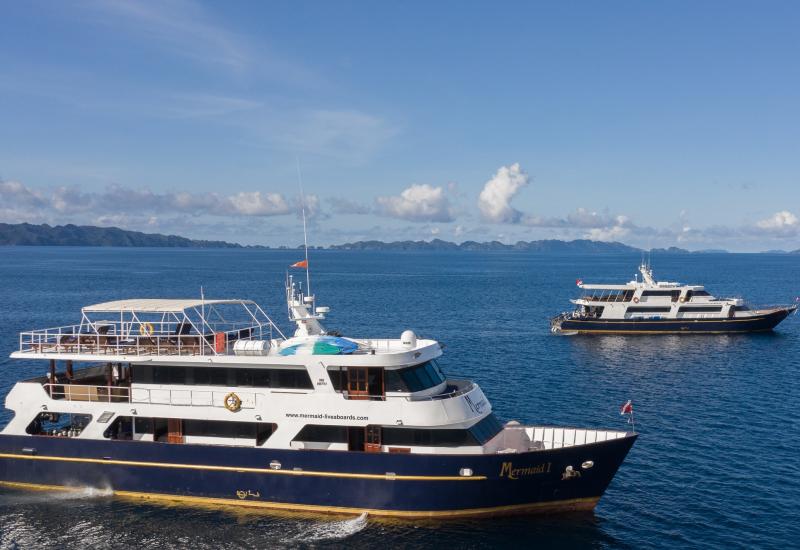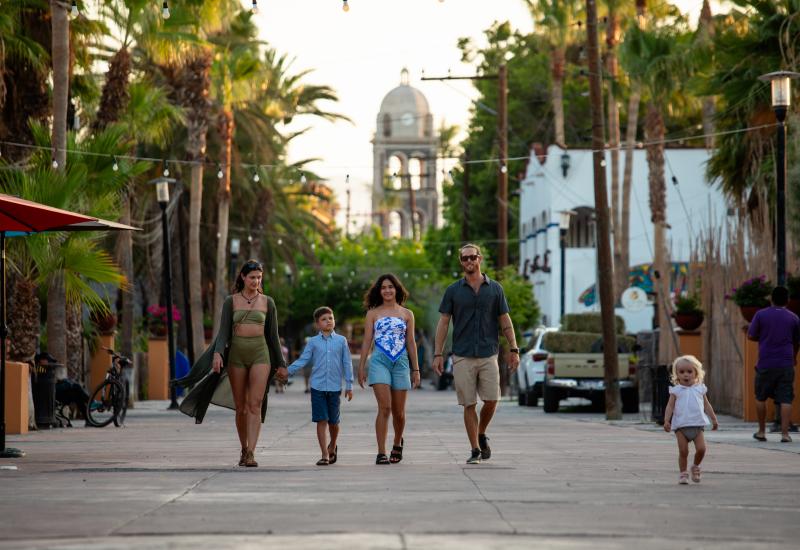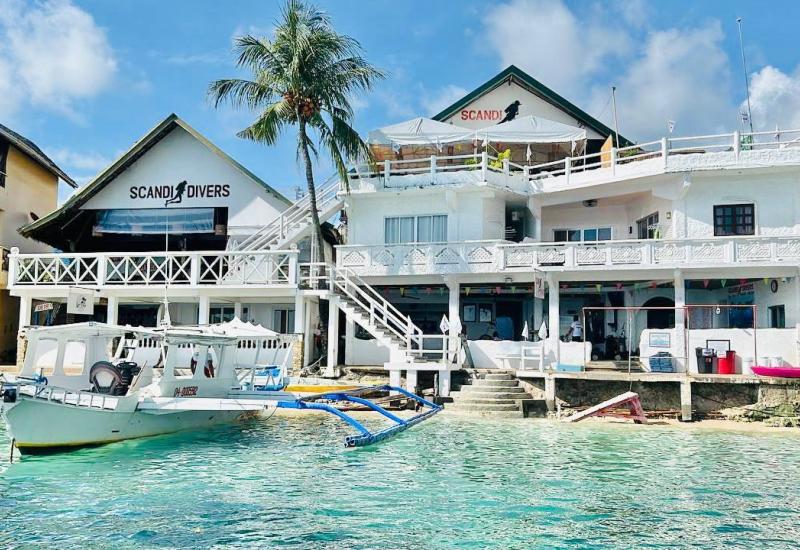Drive and Dive: Cold-Water Diving in British Columbia
Every diver remembers his first time. My baptism in British Columbia waters was 25 years ago, in Discovery Passage. The midwinter plunge at a site called Whiskey Point opened my eyes to just how great cold-water diving could
be. Granted, I nearly froze to death. (You would think with 1,000 dives under my belt I would have known better than to wear a ratty, old hand-me-down wetsuit. Chalk it up to the follies of youth and the poverty of a college student.) I survived, emerging from the emerald seas stuttering excitedly about the remarkable color, the diversity of life and the magic of wolf eels.
BACK TO THE FUTURE
Flash forward to February 2015. I smile to think that seminal voyage to British Columbia’s Vancouver Island began much like this one. I’ve just convinced the border agent that, yes, the purpose of our visit to Canada in the middle of a gray winter drizzle is indeed scuba diving, that we’d be taking only pictures, leaving only bubbles. Our little car is stuffed to the gills with dive gear, tanks clinking merrily at each turn in the road. We’re making a beeline for the Tsawwassen ferry, which will whisk us across to Vancouver Island. We’ll arrive at Campbell River in four hours and be underwater in the morning. Tunes are blaring. Life is grand.
TIMING IS EVERYTHING
Tapping his smartphone, Bill Coltart consults his favorite app and then announces that the time is nigh. “Slack should be in about 10 minutes. Make your final buddy checks and hang tight. We’ll move the boat into position.” Coltart, owner of Pacific Pro Dive, gently nudges his 30-foot, custom-built aluminum Ata’Tude close to the rocks, then stares intently downward, reading the gray-green water. Even with a lifetime of midisland ocean experience, he admits that predicting slack water in Discovery Passage — the interval between tides when water movement is at a minimum — is part science, part experience, and part adapt-on-the-fly.
Thankfully, we nail it at Whiskey Point. Dropping down a series of rocky steps carpeted in bright-yellow sponges and strawberry sea anemones, I’m amazed once again that such tropical hues exist in the cool Pacifc Northwest. At 70 feet, my computer shows 47 degrees, but who cares? (This time, we have drysuits.) Hulking lingcod are lounging about, begging to be photographed. A Puget Sound king crab clambers past like a Technicolor Humvee on a mission.
My plan is to keep moving south in hopes of finding my wolf eels of memory. But we are waylaid by a giant Pacifc octopus. It’s a pipsqueak, no bigger than my fist. This little guy is all attitude, launching off the wall and squirting a cloud of ink to bamboozle us. My wife, Melissa, sees through his anemic smoke screen and follows him down to 80 feet, where he settles on a pink-coralline-algae-covered rock and does his best sea urchin imitation. Unfortunately, a building flood tide 30 minutes later encourages us to ascend.
As soon as we break the surface, I begin babbling about the remarkable color, the diversity of life, and the magic of the octopus.
A CURRENT-POLISHED JEWEL
Vancouver Island’s bulk does a splendid job sheltering Campbell River’s dive sites from open-ocean storms and the punishing Pacifc swell. Currents, however, can scream through these inland waters — up to 16 knots in Seymour Narrows, just north of town. Current is the region’s lifeblood, a conveyor belt bringing nutrient-rich, oxygenated seawater and plentiful food to marine life large and small. It’s no surprise that Seymour Narrows is a superb dive whose sheer walls are plastered in a kaleidoscope of anemones and sea stars.
Along the Quadra Island side of the passage, at Row and Be Damned, we make a leisurely, hourlong ramble in 55 feet, over boulders smothered in billions of red anemones. We discover kelp greenlings zinging back and forth, nudibranchs, weird scaled crabs, and a reclusive tiger rockfsh, all amid ruby splendor. Our submersion coincided with the calm of slack water between modest tidal exchanges — otherwise, we would have sucked through our air in a few moments fighting against Poseidon’s sea wind.
Day two finds us weaving beneath the Argonaut Wharf, a forest of pilings from which ghostly plumose sea anemones sprout, and under which critters creep and scuttle about. Accessible by shore or boat, it’s an excellent place to encounter octopuses in less than 40 feet. Second slack is reserved for Steep Island and its garden of giant feather duster tubeworms starting at 50 feet and cascading past 100. Quillback rockfsh hover near their purple, pompom-like blooms, and divers with eagle eyes will spy outrageously painted candy-stripe shrimp under the tentacles of snakelocks anemones.
One of the few sites accessible while current is running is the HMCS Columbia, a 366-foot destroyer sunk by the Artificial Reef Society of British Columbia in 1996. Well prepared, with plenty to see between 60 and 120 feet, it’s a good intro to B.C. wreck diving. For the nocturnal, a night dive in Quathiaski Cove provides an opportunity to poke around the shallows, hunting for micro beasties.
STELLER SHOW
On our final day, we drive over an hour south into Comox to meet up with Coltart again at the municipal marina.
We transfer gear onto Fast Forward, his ex-Coast Guard Zodiac, and greet our dive mates, filmmakers Russell Clark and Trisha Stovel, on assignment for seaproof.tv.
Under leaden skies, we race along at 20 knots to Norris Rocks, just off Hornby Island. The raucous barking and the smell offer irrefutable proof that we’ve arrived. Hundreds of huge Steller sea lions shamble about on the low-lying rock.
Coltart smiles, asking, “Ready for the full-contact action to commence?” Trisha chimes in: “It’s like running around the woods among a massive wolf pack that uses newcomers as chew toys — in the friendliest way possible!”
We back roll into the green. Silence greets us. As do 50-odd marine mammals, eager to play. At first, the sea lions politely swim around us at arm’s length, tilting their heads like curious puppy dogs and ogling us with dreamy eyes. Minutes later, they’re mobbing us. They cuddle, lean heavily on us, and take “exploratory” bites, mouthing our arms and legs. They nuzzle against my camera, pull at coiled strobe cords and nibble our fins. If you don’t fancy being in the middle of an underwater rugby scrum, consider skipping this dive.
Two hourlong dives pass too quickly, and the boisterous throng seems truly sorry to see us go. We will dearly miss the sea-lion loving.
ITINERARY B.C., CANADA
Day One Feast on the loggers breakfast and morning glory muffins at Ideal Cafe. Dive. Dive again at an off-slack site like the Columbia. Dick’s Fish and Chips is a no-brainer for grub to refuel yourself for the third tank. Dive. Afterward, enjoy the authentic Greek and primo steaks at Acropolis Kuizina. Sleep very soundly.
Day Two Between today’s two slack dives visit the Museum at Campbell River to immerse yourself in the thousands-year-old art, culture and history of the First Nations coastal peoples. Picnic under a seaside totem pole. When you climb out of your suit after your last dive, head to funky Freddie's Pub to meet other scubakind over wings and brew.
DAY THREE Use this as a wild-card day to customize your getaway. Be harassed by sea lions, do additional dives at premier sites such as April Point Wall and Copper Cliffs, or become one with salmon in the Campbell River. Mountain bike in Snowden Demonstration Forest. Watch grizzly bears and whales with Aboriginal Journeys, or shred the slopes at nearby Mount Washington. Let the season — and your style — decide.
NEED TO KNOW
When to Go Diving Discovery Passage is possible year-round. Visit between November and April to add sea lion dives at Mitlenatch Island or Norris Rocks. From August to October, join Pacific Pro Dive for a drift snorkel down the Campbell River to witness mighty Pacific salmon concluding their epic journey to spawn and die.
Dive Conditions Sea temperatures range from 45 to 55 degrees, and visibility 20 to 80 feet. Winter generally delivers the best viz, and summer and fall the best topside weather and warmest water. Drysuits or thick semidry wetsuits are strongly recommended. Dive with experienced locals, use a live boat, plan a submersions for slack water, and be wary of boat traffic, especially during summer.
Operators Pacific Pro Dive (pacificprodive.com)
Price Tag Custom charters are from $99 to $120 (Canadian) for two-tank air dive charters.
Every diver remembers his first time. My baptism in British Columbia waters was 25 years ago, in Discovery Passage. The midwinter plunge at a site called Whiskey Point opened my eyes to just how great cold-water diving could be. Granted, I nearly froze to death. (You would think with 1,000 dives under my belt I would have known better than to wear a ratty, old hand-me-down wetsuit. Chalk it up to the follies of youth and the poverty of a college student.) I survived, emerging from the emerald seas stuttering excitedly about the remarkable color, the diversity of life and the magic of wolf eels.

Brandon ColeCandy-Colored Kelp
Diving in Discovery passage, divers will find candy-colored kelp carpeting the walls.
BACK TO THE FUTURE
Flash forward to February 2015. I smile to think that seminal voyage to British Columbia’s Vancouver Island began much like this one. I’ve just convinced the border agent that, yes, the purpose of our visit to Canada in the middle of a gray winter drizzle is indeed scuba diving, that we’d be taking only pictures, leaving only bubbles. Our little car is stuffed to the gills with dive gear, tanks clinking merrily at each turn in the road. We’re making a beeline for the Tsawwassen ferry, which will whisk us across to Vancouver Island. We’ll arrive at Campbell River in four hours and be underwater in the morning. Tunes are blaring. Life is grand.

Brandon ColeTime Passages
Some things fade with age, but not the magic of sea lions and the underwater beauty of British Columbia.
TIMING IS EVERYTHING
Tapping his smartphone, Bill Coltart consults his favorite app and then announces that the time is nigh. “Slack should be in about 10 minutes. Make your final buddy checks and hang tight. We’ll move the boat into position.” Coltart, owner of Pacific Pro Dive, gently nudges his 30-foot, custom-built aluminum Ata’Tude close to the rocks, then stares intently downward, reading the gray-green water. Even with a lifetime of midisland ocean experience, he admits that predicting slack water in Discovery Passage — the interval between tides when water movement is at a minimum — is part science, part experience, and part adapt-on-the-fly.
Thankfully, we nail it at Whiskey Point. Dropping down a series of rocky steps carpeted in bright-yellow sponges and strawberry sea anemones, I’m amazed once again that such tropical hues exist in the cool Pacifc Northwest. At 70 feet, my computer shows 47 degrees, but who cares? (This time, we have drysuits.) Hulking lingcod are lounging about, begging to be photographed. A Puget Sound king crab clambers past like a Technicolor Humvee on a mission.
My plan is to keep moving south in hopes of finding my wolf eels of memory. But we are waylaid by a giant Pacifc octopus. It’s a pipsqueak, no bigger than my fist. This little guy is all attitude, launching off the wall and squirting a cloud of ink to bamboozle us. My wife, Melissa, sees through his anemic smoke screen and follows him down to 80 feet, where he settles on a pink-coralline-algae-covered rock and does his best sea urchin imitation. Unfortunately, a building flood tide 30 minutes later encourages us to ascend.
As soon as we break the surface, I begin babbling about the remarkable color, the diversity of life, and the magic of the octopus.

Brandon ColeWolf Eel
Wolf eels peer out from their dens in Discovery Passage.
A CURRENT-POLISHED JEWEL
Vancouver Island’s bulk does a splendid job sheltering Campbell River’s dive sites from open-ocean storms and the punishing Pacifc swell. Currents, however, can scream through these inland waters — up to 16 knots in Seymour Narrows, just north of town. Current is the region’s lifeblood, a conveyor belt bringing nutrient-rich, oxygenated seawater and plentiful food to marine life large and small. It’s no surprise that Seymour Narrows is a superb dive whose sheer walls are plastered in a kaleidoscope of anemones and sea stars.
Along the Quadra Island side of the passage, at Row and Be Damned, we make a leisurely, hourlong ramble in 55 feet, over boulders smothered in billions of red anemones. We discover kelp greenlings zinging back and forth, nudibranchs, weird scaled crabs, and a reclusive tiger rockfsh, all amid ruby splendor. Our submersion coincided with the calm of slack water between modest tidal exchanges — otherwise, we would have sucked through our air in a few moments fighting against Poseidon’s sea wind.
Day two finds us weaving beneath the Argonaut Wharf, a forest of pilings from which ghostly plumose sea anemones sprout, and under which critters creep and scuttle about. Accessible by shore or boat, it’s an excellent place to encounter octopuses in less than 40 feet. Second slack is reserved for Steep Island and its garden of giant feather duster tubeworms starting at 50 feet and cascading past 100. Quillback rockfsh hover near their purple, pompom-like blooms, and divers with eagle eyes will spy outrageously painted candy-stripe shrimp under the tentacles of snakelocks anemones.
One of the few sites accessible while current is running is the HMCS Columbia, a 366-foot destroyer sunk by the Artificial Reef Society of British Columbia in 1996. Well prepared, with plenty to see between 60 and 120 feet, it’s a good intro to B.C. wreck diving. For the nocturnal, a night dive in Quathiaski Cove provides an opportunity to poke around the shallows, hunting for micro beasties.

Brandon ColeSeymour Narrows
At sunset, Seymour Narrows is beautiful topside.
STELLER SHOW
On our final day, we drive over an hour south into Comox to meet up with Coltart again at the municipal marina.
We transfer gear onto Fast Forward, his ex-Coast Guard Zodiac, and greet our dive mates, filmmakers Russell Clark and Trisha Stovel, on assignment for seaproof.tv.
Under leaden skies, we race along at 20 knots to Norris Rocks, just off Hornby Island. The raucous barking and the smell offer irrefutable proof that we’ve arrived. Hundreds of huge Steller sea lions shamble about on the low-lying rock.
Coltart smiles, asking, “Ready for the full-contact action to commence?” Trisha chimes in: “It’s like running around the woods among a massive wolf pack that uses newcomers as chew toys — in the friendliest way possible!”
We back roll into the green. Silence greets us. As do 50-odd marine mammals, eager to play. At first, the sea lions politely swim around us at arm’s length, tilting their heads like curious puppy dogs and ogling us with dreamy eyes. Minutes later, they’re mobbing us. They cuddle, lean heavily on us, and take “exploratory” bites, mouthing our arms and legs. They nuzzle against my camera, pull at coiled strobe cords and nibble our fins. If you don’t fancy being in the middle of an underwater rugby scrum, consider skipping this dive.
Two hourlong dives pass too quickly, and the boisterous throng seems truly sorry to see us go. We will dearly miss the sea-lion loving.
ITINERARY B.C., CANADA
Day One Feast on the loggers breakfast and morning glory muffins at Ideal Cafe. Dive. Dive again at an off-slack site like the Columbia. Dick’s Fish and Chips is a no-brainer for grub to refuel yourself for the third tank. Dive. Afterward, enjoy the authentic Greek and primo steaks at Acropolis Kuizina. Sleep very soundly.
Day Two Between today’s two slack dives visit the Museum at Campbell River to immerse yourself in the thousands-year-old art, culture and history of the First Nations coastal peoples. Picnic under a seaside totem pole. When you climb out of your suit after your last dive, head to funky Freddie's Pub to meet other scubakind over wings and brew.
DAY THREE Use this as a wild-card day to customize your getaway. Be harassed by sea lions, do additional dives at premier sites such as April Point Wall and Copper Cliffs, or become one with salmon in the Campbell River. Mountain bike in Snowden Demonstration Forest. Watch grizzly bears and whales with Aboriginal Journeys, or shred the slopes at nearby Mount Washington. Let the season — and your style — decide.
NEED TO KNOW
When to Go Diving Discovery Passage is possible year-round. Visit between November and April to add sea lion dives at Mitlenatch Island or Norris Rocks. From August to October, join Pacific Pro Dive for a drift snorkel down the Campbell River to witness mighty Pacific salmon concluding their epic journey to spawn and die.
Dive Conditions Sea temperatures range from 45 to 55 degrees, and visibility 20 to 80 feet. Winter generally delivers the best viz, and summer and fall the best topside weather and warmest water. Drysuits or thick semidry wetsuits are strongly recommended. Dive with experienced locals, use a live boat, plan a submersions for slack water, and be wary of boat traffic, especially during summer.
Operators Pacific Pro Dive (pacificprodive.com)
Price Tag Custom charters are from $99 to $120 (Canadian) for two-tank air dive charters.










